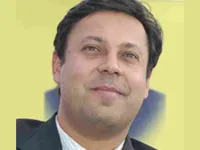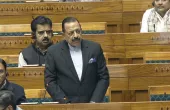
India on the move towards solar energy
By Inderpreet S WadhwaIndia has made impressive progress in the field of electricity generation since Independence in 1947. In terms of generation, while new capacity has been added, the gap between demand and supply has, by and large, increased.
Currently we are the world’s sixth largest energy consumer and account for 3.4 percent of global consumption of energy. Our installed power generation capacity stands at 181,558.12 MW (as per the latest figures by India’s Central Electricity Authority, 2011) while our total demand for electricity is expected to cross 950,000 MW by 2030. In order to meet India’s need for rural electrification and peak power demand, solar is a good alternative to conventional sources of energy. India’s National Solar Mission launched in 2010 aims to create an enabling policy framework for the deployment of 20,000 MW of solar power by 2022.
After 64 years of our Independence, while India has made significant economic advancement, still almost 20 percent of all Indian villages do not have grid connectivity and just 52.5% of rural households have access to electricity.
If energy policies are formulated and implemented efficiently, we can reach our targets and to achieve them, we need an integrated policy push now. Solar energy has multiple benefits: a clean alternative to conventional energy which is proven, tested and reliable. It is the most promising renewable energy source apt for medium scale distributed generation.
The typical gestation period of conventional power plants could be somewhere between 5 to 6 years, whereas that of a solar power plant is six months. This distributed model of power generation through solar would be beneficial in the reduction of transmission and distribution losses since the point of generation is near the point of consumption.
We can simultaneously build several small 1-5 MW solar power plants around rural communities to meet the immediate electricity demand due to shorter gestation period of solar projects and low operating costs.
Setting up decentralized solar power plants based on solar power also prove beneficial to the environment and rapidly help solve environmental problems, since 1MW of solar power is equivalent to the removal of approximately 1200 tonnes of carbon dioxide per year. This emission reduction is equivalent to 550,000 trees and removing 3,600 cars from roads.
Another area where distributed model of generation can contribute significantly is villages that have no electricity. The distributed model has the potential to bring 20 percent of all Indian villages under the ambit of solar power. With a small effort from government, millions of lives in these villages can be made better and more productive.
Proper government and industry interventions can play a major role in this push towards solar energy. For solar power to prosper in our country, the government should promote R&D in this field. Currently, solar power is more expensive than traditional sources of energy.
The equipment to set up a solar power plant have to be imported from other countries. Proper research would ensure that India develops technologies that would reduce the cost of setting up solar power plants and in the process make solar energy feasible for millions of Indians. Fiscal measures should also be taken to ensure that credit is available for solar projects. The success of the industry lies in rapidly scaling up production and use, so that economies of scale can be achieved thereby reducing the cost. Government should work towards creating a long term and sustainable policy with respect to tariffs, capacity additions and technology transfers.
Inderpreet S Wadhwa, CEO Azure Power




















 Advertise
Advertise






